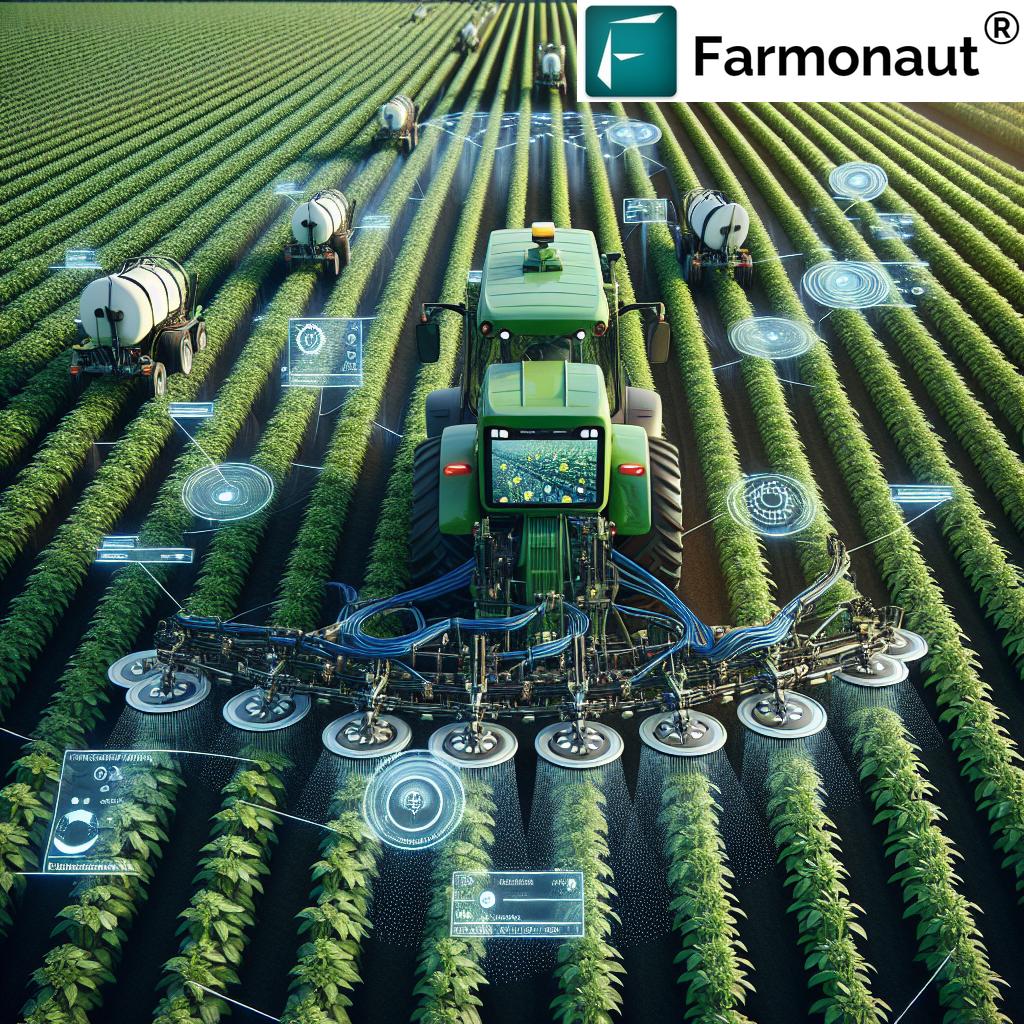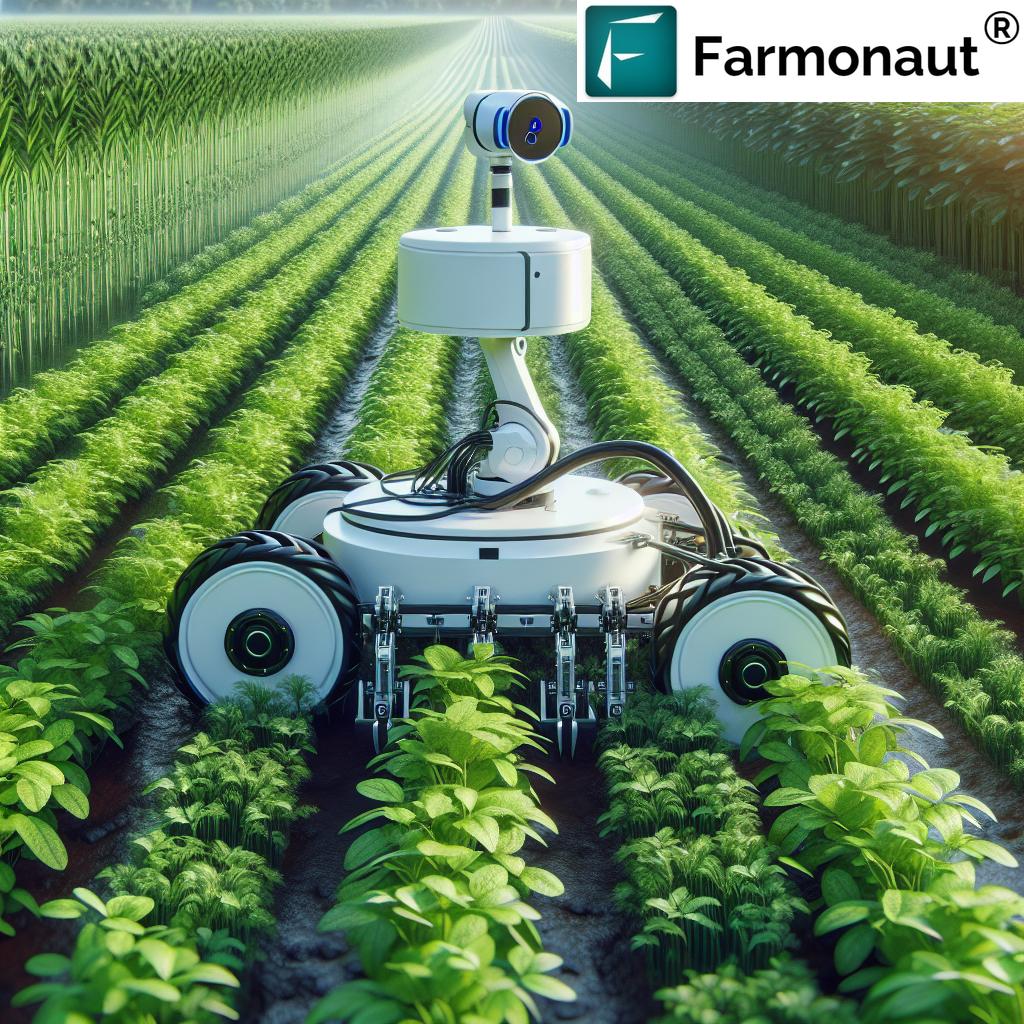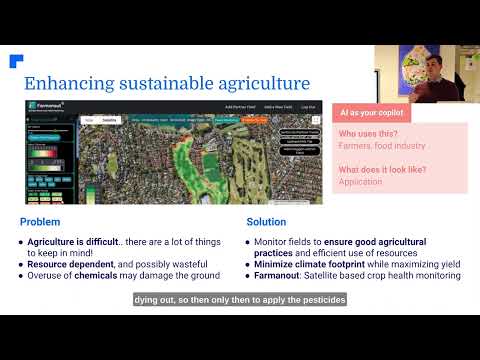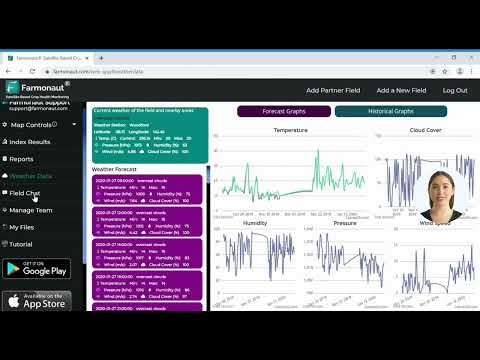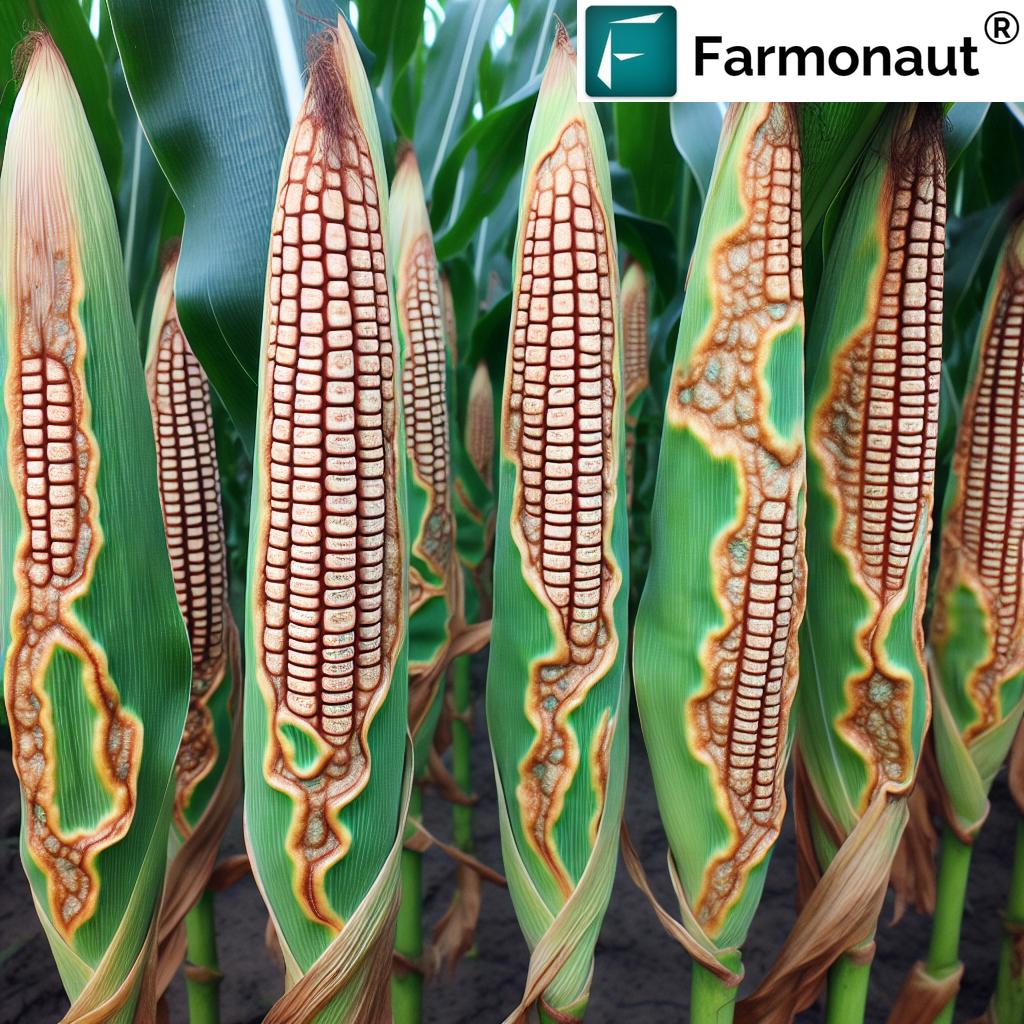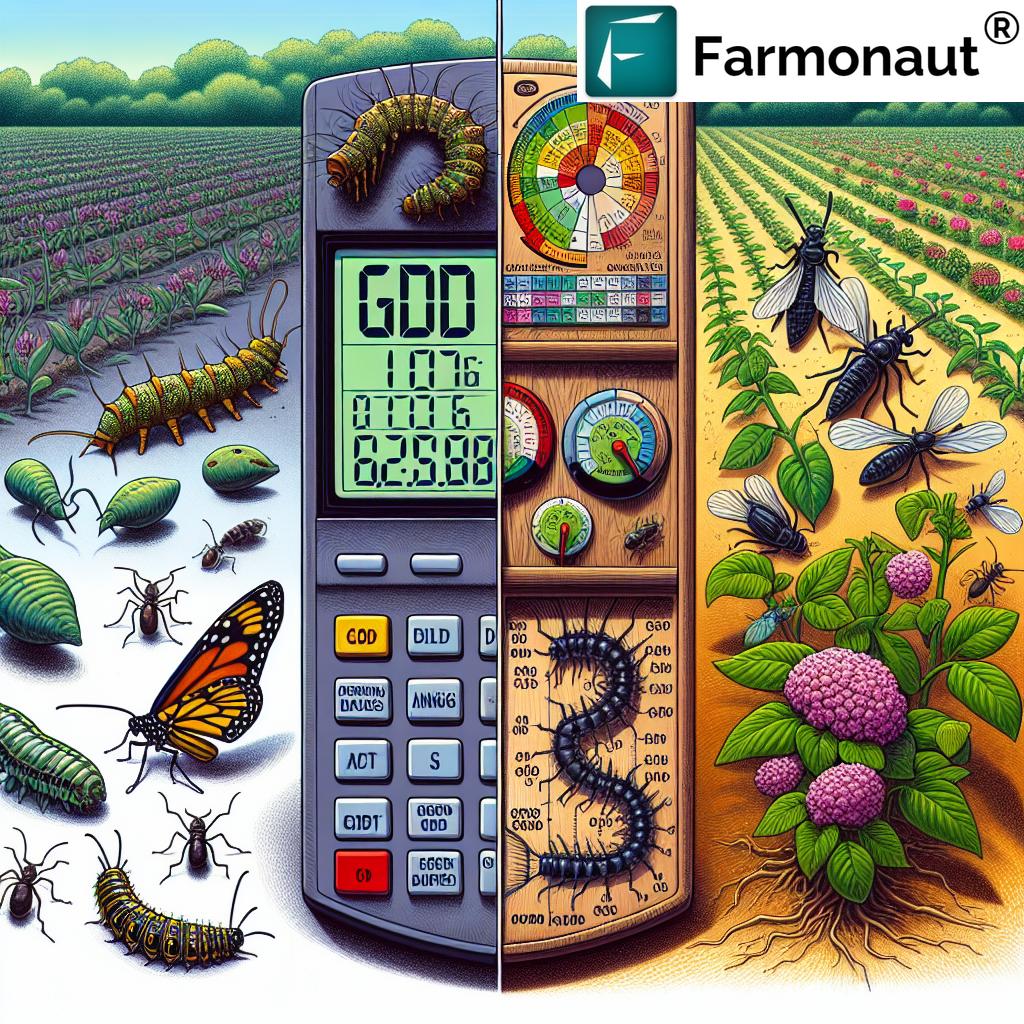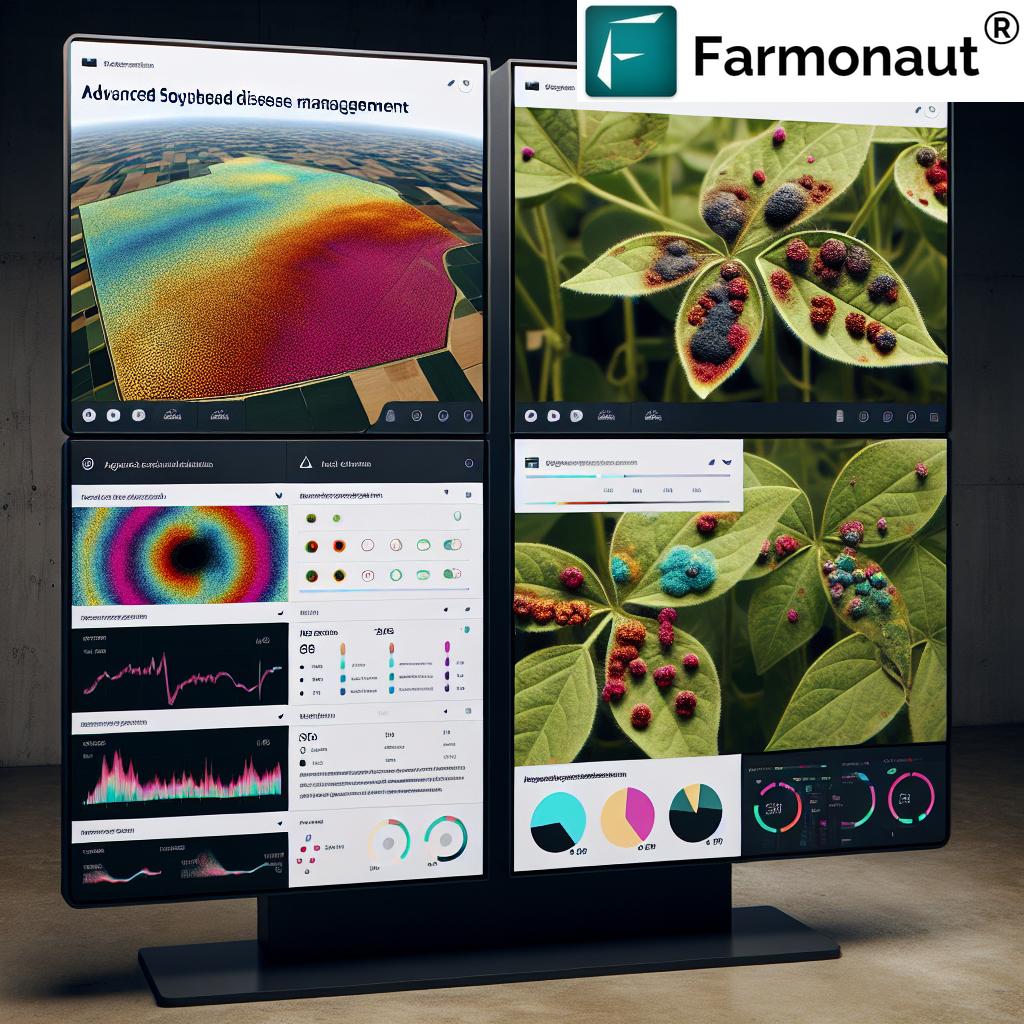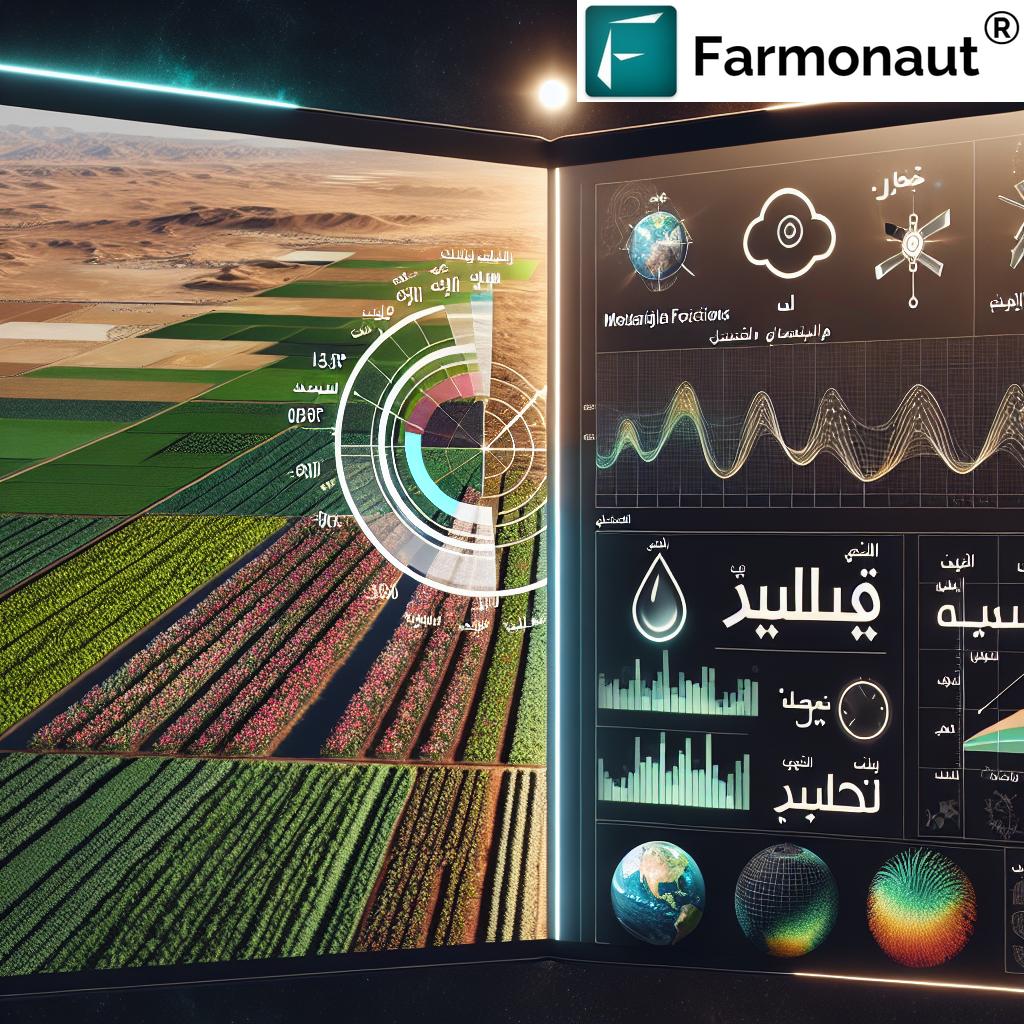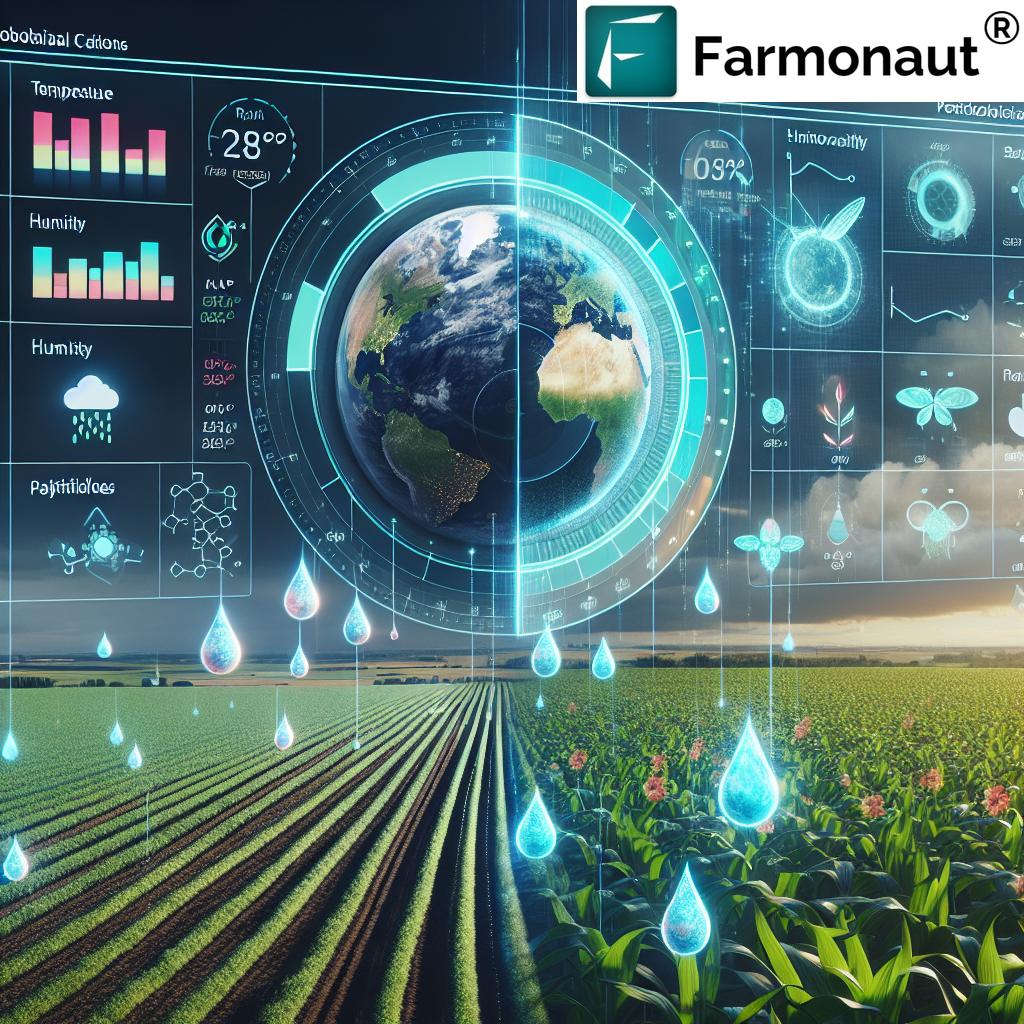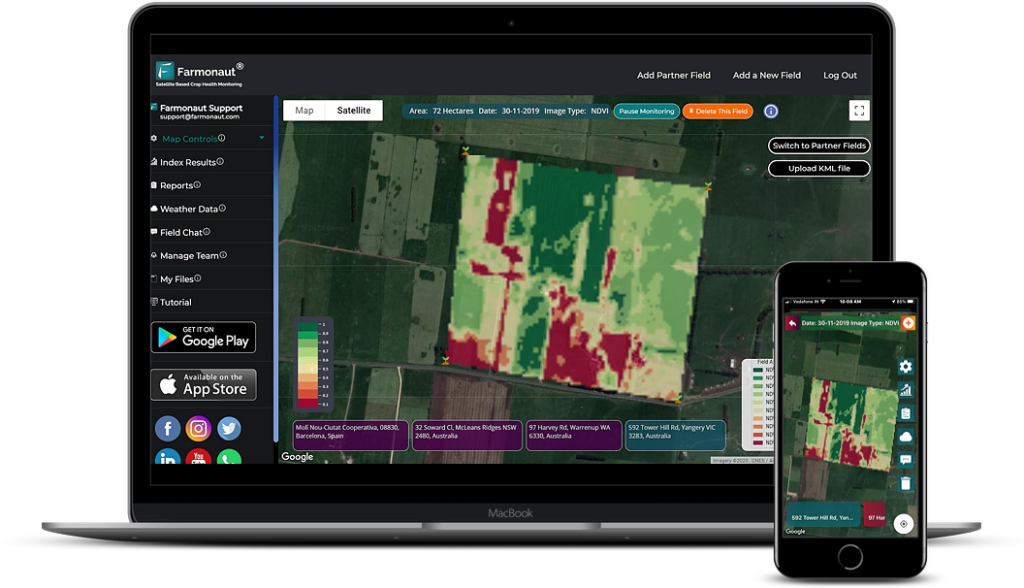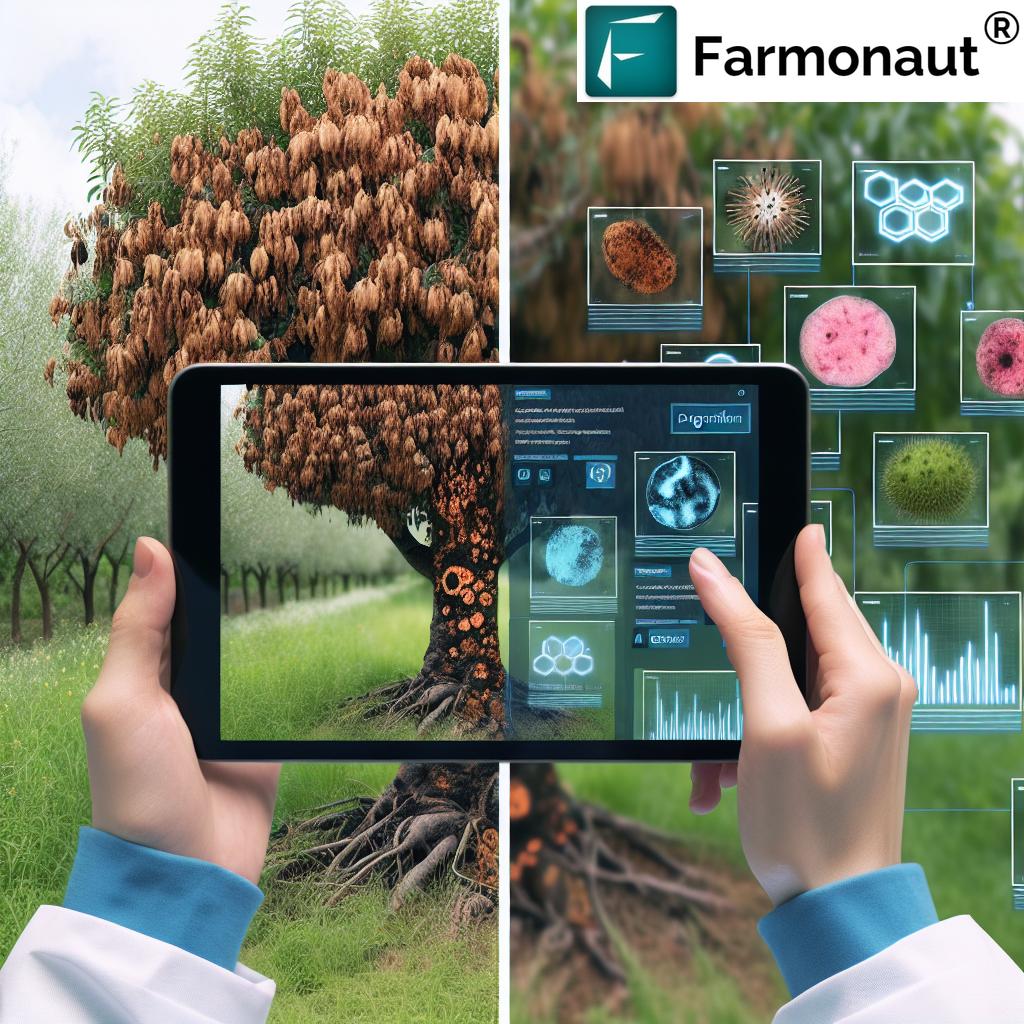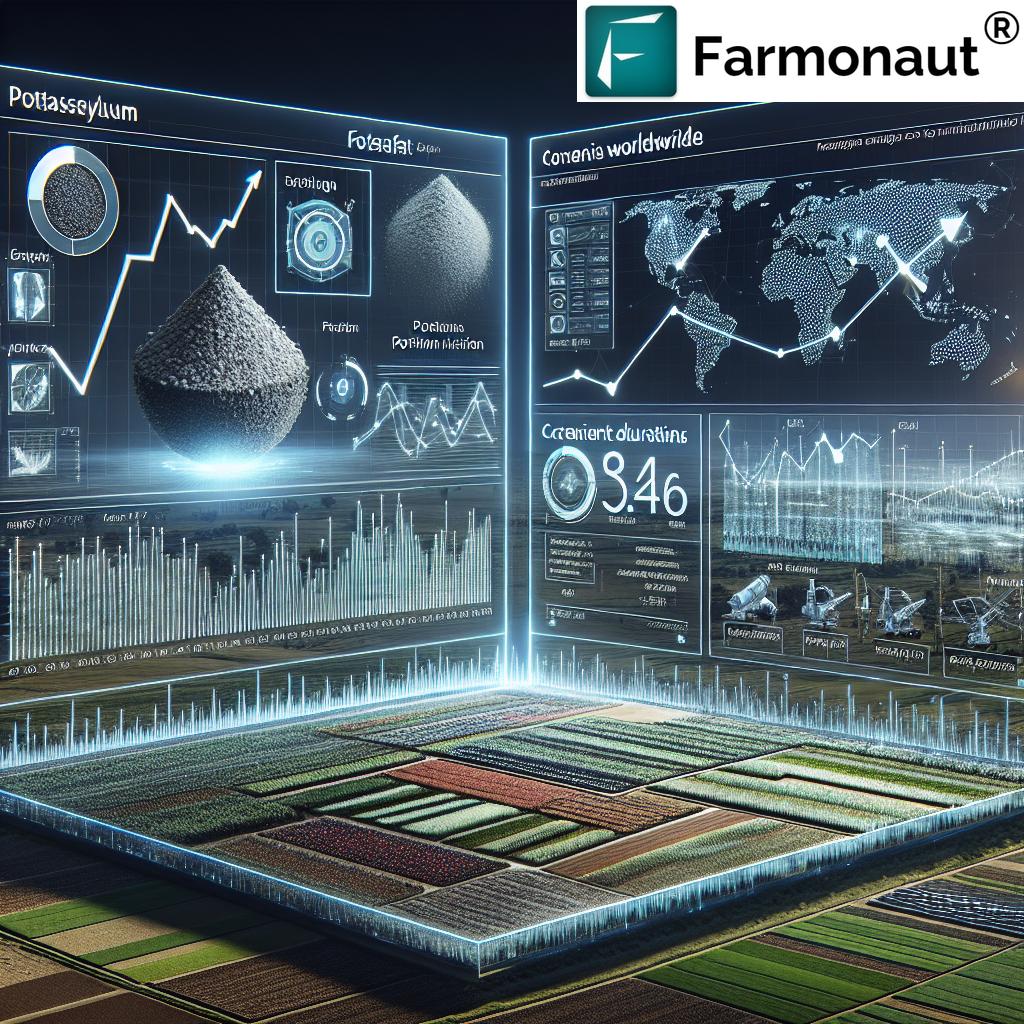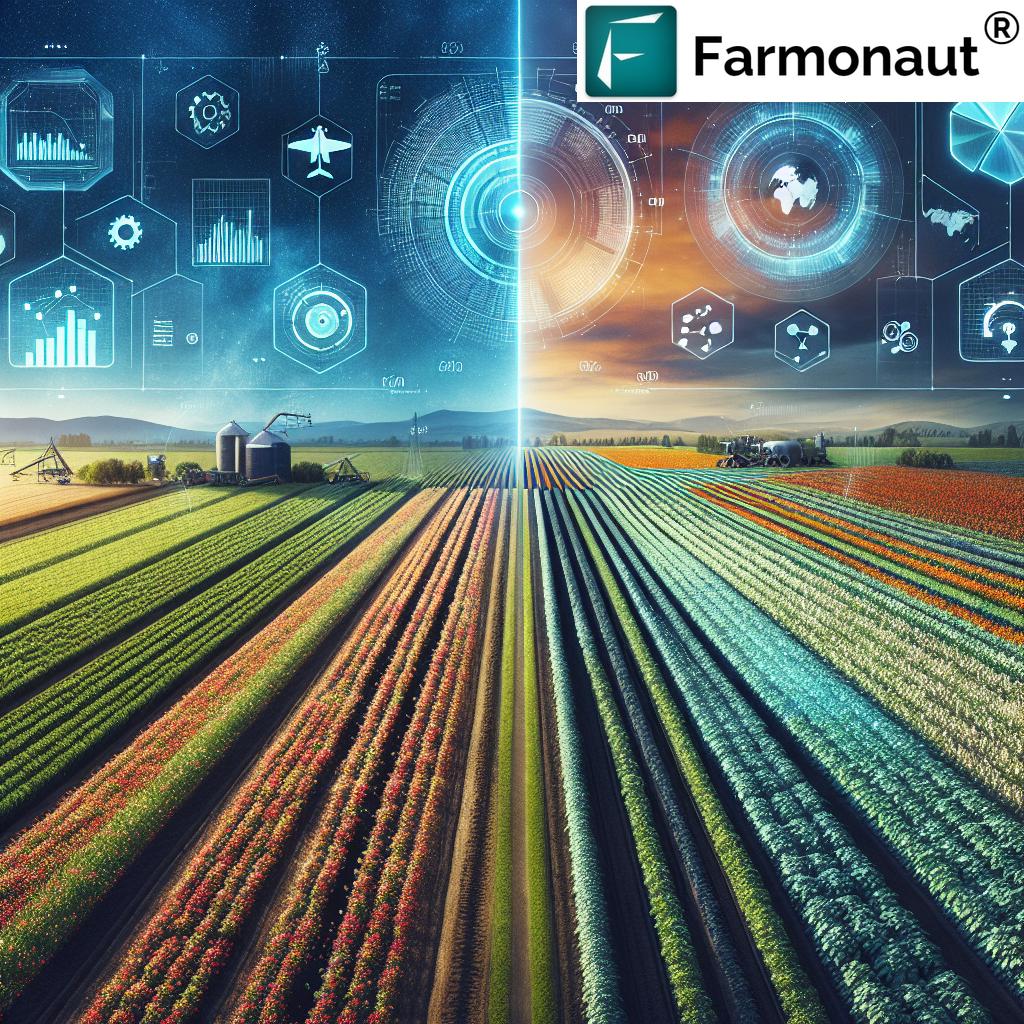AI-Powered Weed Identification: 7 Shocking Tech Reveals
“AI weed identification can analyze over 10,000 plant images per hour, revolutionizing precision weed management in agriculture.”
Introduction: The AI Revolution in Weed Identification
In the dynamic world of agriculture, weeds have always presented persistent challenges to farmers worldwide—undermining crop yields, increasing labor and costs, and necessitating heavy herbicide and chemical applications. Traditional weed management methods are often resource-intensive, time-consuming, and damaging to both enviromental health and profitability. Fortunately, the dawn of AI-powered weed identification is rapidly rewriting the rules with innovative, intelligent, and sustainable solutions that promise to revolutionize how we control weeds.
As we embark on this journey, let’s discover how AI weed identification and precision weed management are transforming farms—from smallholder plots to large-scale agribusinesses—through advanced computer vision, machine learning algorithms, robotics, drones, and more. These state-of-the-art technologies are enabling targeted interventions, reducing herbicide usage, and minimizing environmental impact for a smarter, greener future in agriculture.
The Role of AI in Weed Identification
Artificial Intelligence (AI) has become a driving force in advancing agricultural weed identification. The integration of machine learning and computer vision is significantly improving the accuracy and speed of weed detection, far surpassing what manual methods or simple automated tools could achieve.
By analyzing images—captured via drones, satellites, and ground-based cameras—AI-powered systems can intelligently distinguish between crops and weeds, regardless of their growth stages and in diverse soil conditions. This capability enables targeted interventions, reduces the need for blanket herbicide applications, and promotes sustainable weed management solutions that benefit farmers, agribusinesses, and the environment alike.
Let’s explore the key aspects of how AI is changing the landscape of weed identification in agriculture:
- Automated image analysis: AI models process thousands of images—from satellites, drones, or in-field cameras—in real-time, extracting plant features and identifying weed species with high accuracy.
- Data-driven insights: By integrating soil moisture, weather conditions, and weed population dynamics, AI provides actionable guidance for targeted interventions.
- Real-time decision support: Advanced AI-powered systems notify farmers and operators instantly, allowing them to adjust spraying, mechanical removal, or other methods onsite.
Want to integrate advanced satellite data and AI for your own applications? Access Farmonaut’s APIs for seamless integration, with comprehensive developer documentation for your team!
7 Shocking AI-Powered Technologies Transforming Weed Management
Innovation is at the heart of today’s precision weed management landscape. Recent years have seen the emergence of groundbreaking AI-powered weed identification tools and management systems that were unimaginable just a decade ago. Here are seven transformative technologies redefining how we identify, monitor, and eliminate weeds across the globe.
-
1. Robotic Weeders in Agriculture: Autonomous Field Machines
Robotic weeders are autonomous machines that navigate fields using high-resolution cameras and AI algorithms to identify and remove weeds mechanically or via targeted herbicide application. Examples like FarmWise Labs’ Titan FT-35 demonstrate remarkable efficiency, reducing chemical usage and labor costs while improving accuracy. These automated robots can work day and night, making large-scale weed management both practical and cost-effective.
- Mechanical removal and precise herbicide application
- Minimizes labor dependency
- Reduces risk of over-application
- Promotes soil health by minimizing chemical contact
-
2. Smart Sprayers for Weeds: Real-Time Targeted Application
Smart sprayers, equipped with high-resolution cameras and AI models, detect weeds as they appear and apply herbicides or other interventions only where needed. This precision spraying minimizes herbicide usage, limits soil degradation, and protects surrounding crops. Solutions like Farmonaut’s AI-powered spot spraying technology exemplify this approach, offering significant reductions in chemical application and environmental impact.
- Reduces blanket herbicide spraying
- Enhances environmental sustainability
- Improved cost-efficiency for farmers
- Integrates seamlessly with existing equipment
-
3. Laser Weeding Technology: Eliminating Weeds Without Chemicals
The advent of laser weeding technology, pioneered by innovators like Carbon Robotics’ LaserWeeder, introduces an innovative method for weed control without chemical intervention. AI-guided lasers target and eliminate weeds at the root, preserving crop health, protecting soil biology, and lowering the need for manual weeding. This method is a sustainable leap, providing farmers with a chemical-free solution while achieving unprecedented precision.
- Zero herbicide use
- Safe for soil health and beneficial organisms
- Works 24/7 for maximum efficiency
- Reduces labor requirements and operational costs
-
4. Computer Vision Weed Detection: Advanced Machine Learning Models
By leveraging computer vision and machine learning, AI systems analyze complex image datasets—from drones, satellites, or ground sensors—to identify weed species down to individual leaves or growth stages. Models are constantly enhanced via training on large, annotated datasets—making them increasingly robust across diverse agricultural environments and adaptable to new weed types.
- Distinguishes crops from weeds across growth stages
- Handles variable field conditions
- Accurate data fuels informed management strategies
-
5. AI Weed Identification Apps
Mobile and browser-based apps now empower farmers to identify weeds from images captured directly in the field. These solutions instantly provide species recognition and advisory support via AI models trained on vast image libraries. Such rapid, user-friendly tools dramatically enhance early detection and intervention.
- Instant weed identification in the palm of your hand
- Easy to use for farmers, agronomists, and field agents
- Improves response time and precision management
-
6. AI-Powered Drones and Satellite Imagery
Modern drones and satellites are integrated with AI analysis for constant, large-scale weed monitoring. High-resolution imagery, processed by AI, enables not only weed detection but also trend analysis and predictive modeling. This technology is particularly beneficial for large farms, where manual scouting is impractical.
- Scalable surveillance across thousands of acres
- Detects weed infestations before they spread
- Supports sustainable weed management solutions
-
7. Integration With Precision Farm Management Platforms
Platforms such as Farmonaut harness satellite imagery, AI, and machine learning to provide a holistic agricultural weed management systems experience. Real-time crop health monitoring, AI-based advisory, and resource optimization allow for smarter, data-driven weed control strategies—reducing unnecessary herbicide use and empowering farmers with actionable insights.
- Comprehensive farm management with precise weed control modules
- Accessible through API, web, and mobile apps
- Supports scalability for farms of any size
Comparative Feature Table: Traditional Weed Identification vs AI-Powered Identification
| Criteria | Traditional Identification (Estimated Values) | AI-Powered Identification (Estimated Values) |
|---|---|---|
| Accuracy (%) | 60-75 | 95-99 |
| Average Time to Identify a Weed (minutes) | 5-10 | <0.1 |
| Labor Cost per Acre (USD) | $25 – $40 | $5 – $10 |
| Detection of Rare Weeds (Yes/No) | No | Yes |
| Sustainability Impact Score (1-10) | 3 | 9 |
| Scalability | Limited (small fields only) | Highly scalable (small to very large fields) |
“Precision AI weed management reduces herbicide use by up to 70%, making farming more sustainable and cost-effective.”
Advantages of AI Weed Identification & Precision Management
Implementing AI-powered weed identification and precision weed management delivers a multitude of benefits that go far beyond basic efficiency. Let’s review the transformative value these solutions bring to the agriculture sector:
-
Increased Precision
AI systems accurately identify weed species and assess their growth stages, leading to more effective and targeted control strategies. This granularity reduces the risk of harming crops and promotes more informed decisions with each application.
-
Reduced Environmental Impact
Optimized herbicide application, innovative laser weeding technology, and mechanical removal minimize unnecessary chemical use, thereby reducing runoff, water contamination, and adverse soil health effects. By lowering chemical dependency, we actively protect the surrounding environment and biodiversity.
-
Cost Efficiency and Labor Reduction
By automating weed detection and targeted interventions, AI-driven systems significantly lower labor costs and minimize the volume of herbicides required. This leads to direct cost reductions and improved profitability for farmers.
-
Faster, Data-Driven Decision-Making
AI-powered weed management systems integrate multiple types of data—including weather, soil health, and weed population changes—to generate real-time, actionable insights. This empowers farmers to respond rapidly, adapting weed control tactics to evolving field conditions.
-
Sustainability and Compliance
Through features like carbon footprinting and precision input tracking, AI-driven platforms help farmers achieve sustainability targets, regulatory compliance, and eligibility for eco-friendly certifications.
Real-World Applications of AI-Powered Weed Control
From individual fields to vast agribusinesses, AI weed identification is being adopted worldwide, driving the next wave of precision weed management and sustainability. Key areas where these advanced technologies demonstrate substantial impact include:
- Large-Scale Agricultural Operations: Advanced large scale farm management platforms integrate satellite imagery, AI, and real-time data for full-field and farm-wide weed detection. Automated interventions minimize manual labor and optimize resource allocation.
- Village and Cooperative Farming: With scalable, affordable management tools, cooperatives utilize AI-driven apps and monitoring for joint crop-health surveillance, collective action against weed outbreaks, and shared cost savings.
- Traceable & Sustainable Supply Chains: Through blockchain-driven product traceability features, AI is not only detecting weeds but also ensuring the sustainability and transparency of agricultural products from field to table.
- Insurance & Finance: Satellite-based crop verification for loan and insurance leverages AI for objective, rapid weed-related loss assessment and risk prediction.
- Fleet Management: AI-powered fleet and machinery management tools optimize the deployment of sprayers, robots, and drones, reducing operational costs and improving overall farm efficiency.
Farmonaut: Making Precision Weed Management Affordable & Effective
In the rapidly evolving arena of AI-powered weed identification, Farmonaut stands out as an innovator committed to accessible, affordable, and data-driven agricultural solutions.
- Satellite-based Crop and Weed Health Monitoring: Farmonaut’s system processes multispectral satellite images to deliver real-time insights on vegetation health, weed encroachment, soil moisture, and stressors, all crucial for effective weed detection and precision management.
- AI-based Advisory Systems: The Jeevn AI advisory tool delivers personalized, data-driven weed and crop management strategies, enhancing both farm productivity and efficiency.
- Seamless Accessibility: With apps on Android, iOS, web, and browser, Farmonaut connects farmers to advanced AI-powered weed management systems from virtually anywhere.
- Blockchain-Based Traceability: Farmonaut’s traceability solutions ensure crop integrity and transparency, from the field to the end consumer, crucial for meeting the demands of modern markets.
- Scalable, Subscription-Based Model: Flexible pricing supports everyone from individual smallholders to vast agribusinesses and institutional users.
By empowering farmers with data and actionable insights—without requiring expensive specialized hardware—Farmonaut helps to lower the adoption barrier for precision weed management worldwide. Sustainability, transparency, and profitability now go hand-in-hand.
Challenges, Limitations, and the Future of AI Weed Identification
Despite the dramatic advances in AI-powered weed management, several challenges remain before full, global adoption becomes standard. Recognizing and addressing these gaps is essential for technology providers, research institutions, and policymakers alike.
Key Limitations and Barriers
-
Data Quality and Annotated Datasets:
The accuracy of AI weed identification models depends heavily on high-quality, diverse, annotated image datasets. Many regions lack comprehensive data for lesser-known or endemic weed species, hindering model training and performance under unique local conditions. -
Integration With Existing Equipment and Practices:
Adapting AI-driven solutions into current farming equipment and workflows can be complex, occasionally requiring farm operators to upgrade hardware or adapt traditional practices. -
Cost and Accessibility:
While long-term cost savings are substantial, the initial investment in high-tech equipment (like robotics and drones) can remain a barrier, especially for smallholder farmers. Affordable, easy-to-implement solutions (like Farmonaut’s satellite-based services) are leading the way to greater accessibility. -
Training and Adoption:
Successful implementation requires farmers and staff to acquire digital skills—ongoing training and intuitive interfaces are crucial for adoption and efficiency. -
Variability in Environmental Conditions:
AI models must adapt to ever-changing weather, soil characteristics, and crop rotations. Continuous research is required to enhance model robustness and accuracy across diverse agricultural ecosystems.
The Road Ahead: Innovations on the Horizon
- Enhanced Dataset Development: Open databases and crowd-sourcing could accelerate the growth of annotated weed image libraries for model training.
- Simplified User Interfaces: As AI-powered weed identification apps become more user-centric, broader adoption among non-expert farmers is expected.
- Cross-Tech Integration: IoT devices, blockchain, and cloud connectivity will join forces with AI weed control systems, creating even more powerful farm management platforms.
- Policy and Incentives: Subsidies and financial support could accelerate adoption of environmentally-friendly weed management technologies, especially in developing economies.
- Continuous Research: Emphasis on reproducibility, model explainability, and adaptation to local agricultural conditions will ensure global applicability.
With dedicated effort, these challenges will be overcome, paving the way for smarter, greener, and more productive fields across the world.
Frequently Asked Questions (FAQ)
1. What is AI weed identification?
AI weed identification refers to the use of artificial intelligence—including computer vision and machine learning—to detect and distinguish weeds from crops using images captured from drones, satellites, or ground sensors. It automates and enhances the accuracy and speed of weed management decisions.
2. How does AI-powered weed management reduce herbicide use?
By identifying exactly where weeds are present, AI-powered systems enable smart sprayers and robotic weeders to apply herbicides only as needed, avoiding blanket spraying. This precision can reduce overall herbicide usage by 60–70%, lowering costs and environmental impact.
3. Can smallholder farms benefit from precision weed management?
Yes. Solutions like Farmonaut’s satellite-based crop health monitoring and AI-based advisories are designed to be affordable and scalable, bringing advanced precision agriculture tools to farms of any size.
4. What are the main challenges facing widespread adoption?
Key challenges include access to high-quality annotated datasets for training AI, integrating systems with existing equipment, initial investment costs, and the need for ongoing training among farmers and operators.
5. How is Farmonaut contributing to sustainable weed management?
Farmonaut’s technology leverages satellite data, AI, and blockchain to deliver real-time crop and weed health monitoring, personalized advisories, traceability, and sustainability tracking—making precision weed management more accessible and environmentally friendly.
6. What is laser weeding and how does it work?
Laser weeding uses AI-guided lasers to precisely eliminate weeds without chemicals. High-energy laser beams, directed by computer vision, destroy weed tissue while leaving crops and beneficial soil organisms unharmed.
7. Can AI weed identification detect rare or new weed species?
Yes. By continuously updating and retraining models with new image datasets, AI systems can adapt to detect lesser-known or newly emerging weed species.
8. How can I access Farmonaut’s precision management tools?
Visit the Farmonaut Web & Mobile App or see their APIs and developer docs for integration.
Conclusion: Cultivating a Smarter Future with AI Weed Solutions
The future of agriculture is intelligent, sustainable, and data-driven. With AI-powered weed identification and precision weed management, we are entering a new era of efficiency and environmental stewardship. These technologies are not just reducing herbicide usage and operational costs but are revolutionizing agricultural practices—making farming more sustainable and profitable for all.
Whether you are a smallholder or a large agribusiness, adopting AI-powered weed management systems is essential for future readiness. With innovative solutions from leaders like Farmonaut, the latest in computer vision weed detection, and scalable satellite-powered advisory, the barriers to smart, sustainable farming are rapidly disappearing.
Let us embrace these technological leaps—for healthier soils, higher productivity, and a greener planet.
Related Farmonaut Products:
- Carbon Footprinting: Track and reduce field-level carbon emissions for sustainable certification and compliance.
- Product Traceability: Achieve blockchain-based supply chain transparency and consumer trust.
- Crop Loan and Insurance Verification: Leverage satellite data and AI for rapid, secure loan and insurance claim validation.
- Fleet Management: Optimize machinery usage, reduce costs, and streamline operations with AI-based monitoring.
- Large Scale Farm Management: Manage plantations, crop health, weed detection, and interventions at scale with end-to-end precision agriculture tools.
Together, let’s harness AI-powered weed identification for cleaner fields, richer harvests, and a future where sustainability and profitability grow side by side.





